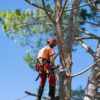Monthly Reports May
March 2022.
World events surrounding COVID and the Ukraine invasion are dominating all market speak at present. The key impacts across the log trade are expressed in ship availability and cost, hence the focus for this months report.
For the forest sector, shipping across all wood fibre commodities impacts at a number of levels. Shipping capacity, cost and on time delivery are some of the balls constantly in the air with an ability to juggle them in to any semblance of order a major challenge.
Although always a bottom line cost element of export sales in the past, shipping, has now become the primary driver for what happens at the NZ wharf gate price.
Most NZ logs are shipped as breakbulk cargo in Handysize vessels which are fitted with on board cranes NZ Stevedores operate when loading logs. These are also the vessels that bring to NZ the likes of steel, wheat, fertiliser, that nasty palm kernel & coal.
NZ exporters have the advantage of picking these up for the return journey, although vessels discharging similar cargos in Australia will also come down to NZ for a backload. We have a huge imbalance of trade at present, in February for example, printing a NZ$385mil deficit with imports well outweighing exports.
On the surface, this would s would suggest a dearth of vessels available. Unfortunately, the imbalance is mostly in fuel and those vessels do not carry logs. The most recent significant lifts in prices are the direct consequence of availability and up until the last 2 weeks, that has been in the ship owners favour.
Internationally earnings in the Handysize segment were up 244% in 2021 compared to 2020. This is compared to Cape and Panamaxe classes, up 140% and 125% respectively.
Over the last year rocketing container freight costs has seen some cargos switching to breakbulk and Handysize vessels. Scrap steel is an example and internationally, scrap steel is going hand busters.
As an example, South Korea has doubled imports of scrap steel by volume in the last 12 months and doubled the volume in the breakbulk sector. Handies hauled close to 16 million tonnes of scrap steel from all sources in 2021, up 32% year on year basis.
Woodchips make up another huge use for Handies with the likes of UK, Japan, China and Netherlands switching out coal with wood fibre and volumes up on average 9%.
Demand for fertiliser internationally is strong and demand for Handies in this sector up 4% whilst supply is tight as natural gas shortages have crimped production in a sector requiring high energy use.
Increased wait to load and wait to discharge times are weighing heavily on the shipping sector. With most countries now rife with COVID, there are not the staff on the ground and testing and clearance procedures are delaying discharges. In China the average wait time across all ports has increased to 11 days, up from 2 days in October 2021.
Sittting under a rampant demand and 10%+ of the capacity sitting at ports waiting, there has been a significant under investment in new vessel builds. A 16% increase in Handysize capacity since 2014 is matched at 42% increase in Supramax and 30% increases in Panamax and Cape size builds.
All of this suggests the demand for Handysize vessels and therefore high cost of freight is going to be with us for some time.
Meanwhile in the log trade, our domestic sawmills are running at highest possible capacity in the face of significantly reduced staff numbers due to COVID. Order books remain full to overflowing but a real issue right now is order pickups are stretching as builders cannot source many of the other products they need to even start projects.
In China daily softwood log consumption is running at 75,000 cubic metres per day and inventory is dropping slightly as NZ remains about the only supply source.
We are expecting drops in prices at NZ wharf gate in April but a slight turn down in shipping costs in the last 2 weeks, primarily due to lower fuel costs together with slightly higher CFR settlements should reduce the impact at the NZ wharf gate.
As always People, please remember the thoroughly important message, “It remains, as always, fundamentally important, no matter the challenges, the only way forward for climate, country and the planet, is to get out there and plant more trees”.
Allan Laurie, MNZIF
Laurie Forestry Ltd













